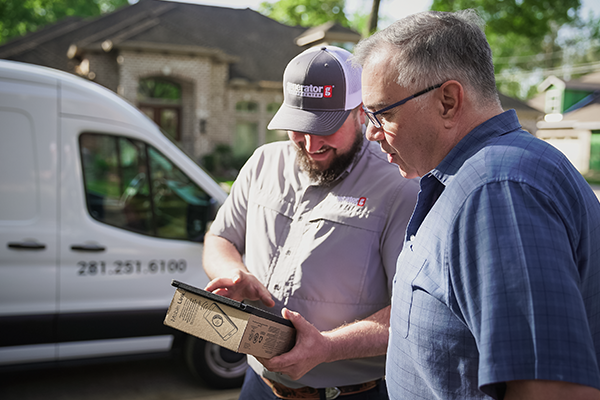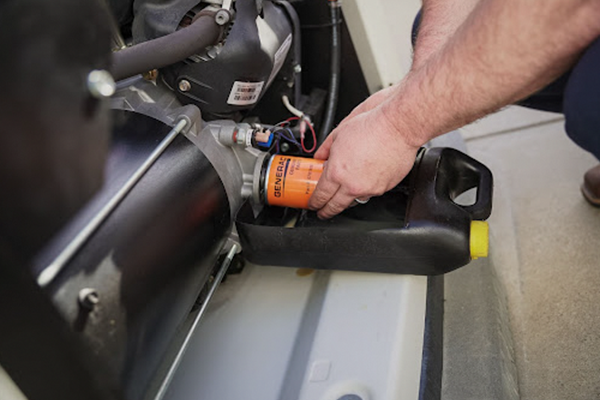With tornadoes being in Michigan’s History, the question is not whether you will deal with one of them – but when. Especially during November, February, March, and April, the state is often swept by powerful storms that can turn into a deadly tornado in a matter of seconds.
And, since a tornado won’t last any longer than a few seconds, there is not much you can do as you see it approaching – all the preparation needs to be done in advance. So, if today the sun is shining, don’t miss the opportunity to get yourself, your home, and your loved ones ready.
Firstly – Know Your Warnings
As you see a column of air moving towards you at over 100mph, there is not much time to think. That is why it is essential that you are ready for the next tornado right now. Start by understanding the different warnings.
- Severe thunderstorm watch – because of the current weather conditions, the watch area might be subjected to severe thunderstorms with winds as high as 58mph and/or hail of ⅓in in diameter.
- Severe thunderstorm warning – spotters or radars might have pinpointed a severe thunderstorm happening in the warning area. You can expect these warnings to be eased within 90 minutes.
- Tornado watch – weather conditions indicate that the formation of a tornado in and around the watch area is possible.
- Tornado warning – spotters or radars have sighted a tornado in the warning area. During a tornado warning, all people in the area should go to their safe place or take cover immediately.
As the tragic events of March 3, 2020, tell us, it is not always possible to foresee a tornado, as conditions can change within seconds.
Find Shelter Underground
Before the tornado strikes, you and your household need to determine a safe place where you can ride out the storm. This should be a location as far as possible from windows and doors, which can be shattered by hail and strong winds. Recommended places include basements, storm cellars, or the lowest room with no windows.
If you find yourself in a high-rise building and you don’t have time to reach the bottom floor, you should go towards a central hallway or innermost room.
It is always recommendable to be clear on your plan of action beforehand:
- Always keep an emergency kit ready
- Have a home evacuation plan – and practice it!
- Know your plan to keep seniors, kids, and pets safe
- Keep yourself informed
- Agree on a plan with your family to get back in touch
If Outdoors, Pinpoint a Sturdy Building
In luckier instances, you might find yourself at home, a step away from your safe place. However, if a tornado catches you when you are outdoors or driving, instructions are not dissimilar. Ideally, you should try to get home as quickly as possible. If you are too far, go towards a sturdy building nearby.
If you live in a mobile home, you should go towards a safe place, as these structures are not designed to be safe in the event of a tornado. When driving, you should try to find a ditch and get as low as possible, covering your head. Stay away from bridges, motorway overpasses, and your own vehicle.
Dress for the Weather
As bad weather approaches, you should always make sure that it finds you wearing a helmet and shoes. During the storm, a helmet can protect your head and neck from head trauma, which flying objects can easily cause. Don’t underestimate the power of a lightweight item when it moves at over 100mph!
Similarly, shoes will be your best friend when walking through debris, nails, glass, or wood after a tornado. While lighter tornadoes might not affect your home’s structure, you should always prepare for the worst-case scenario.
Make Sure Pets, Kids, and Seniors Are Safe
Before the storm, everyone in your household must know your evacuation plan. Everyone in the house, including kids and seniors, should be instructed about where the safest place is, how to reach it, and what to carry with them. Naturally, if you are there during a tornado, you can also help them deal with the situation.
Other tips include speaking to your child’s daycare facilities and school to inquire about their emergency measures in the event of a tornado.
During a storm, always keep your pet on a leash and bring them with you. The more you talk about and practice your plan before a storm, the less likely you are to deal with a high-panic situation.
Stay at Home
It might seem obvious, but you should not leave your home or get in your car if you are already in a safe building. In the frenzy that often accompanies a tornado, it is easy to panic and try to outrun a tornado. However, the safest place is always underground – or inside your home. Even if you feel like the tornado is moving straight towards you, remember that winds can quickly change directions, making them unpredictable and lethal.
Prepare Your Home in Advance
There is not much you can do during the brief moments between seeing a tornado and having to find immediate shelter. However, before a storm, you can prepare for it – which can save many lives, including yours.
- Be clear on what items you need to bring inside your home during a storm
- Take care of your garden landscape to ensure that trees are not a liability during a tornado
- Consider installing shutters that can be quickly closed and protect your windows
- Invest in stronger garage doors
- Have everything you need in your storm cellar
Be Ready for Power Outages – Before and After the Storm!
Power outages are among the most dangerous consequences of a tornado. Debris, objects carried by the tornado, or the sheer force of the wind can cause power disruptions at any time during the storm.
If the tornado hits at nighttime, a power outage might leave you to deal with the aftermath of a catastrophe in the dark. And, even if the winds are not strong enough to damage your home, you would not want your home to be without electricity, fuel, and the connection is such a crucial moment.
Luckily, all you need to do to prepare for this eventuality is to invest in a backup generator and some extra fuel – to power up your home in the case of a prolonged power outage. If you don’t want your generator to be something else to think about during a tornado, a standby mode will switch on automatically and help you ride out the storm in a warm and comfortable home.





